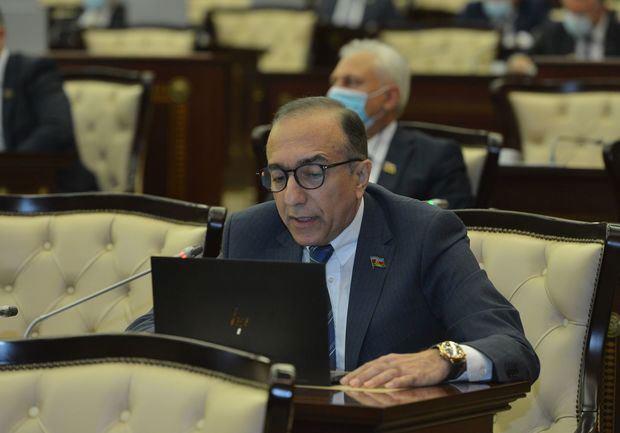
Mine Threat From Armenia Constitutes International Crime
BAKU, Azerbaijan, September 26. After the second Karabakh war, Azerbaijan began large-scale construction work on all previously occupied territories and started the implementation of major projects as soon as possible, however, one of the most serious threats to the rapid, consistent and safe conduct of these works is the placement of 100 and 1,000 of mines by Armenians on the territories of Azerbaijan.
Member of the Azerbaijani Parliament's (Milli Majlis) Committee on Legal Policy and State Building Nizami Safarov told Trend.
“After the end of the war and various armed conflicts, eliminating their consequences and the dangers they create became one of the most important tasks. However, it's a pity that Armenia, as always, behaves irresponsibly in this important issue contrary to international law,' he stated.
It should be noted that in response to a serious humanitarian crisis resulting from the large-scale deployment of landmines, on October 10, 1980, the UN adopted the Convention on Certain Conventional Weapons, which prohibits or restricts the use of certain conventional weapons and may be deemed to be excessively injurious or to have indiscriminate effects (including Protocols No. I, II and III), and on September 18, 1997, in the capital of Canada, Ottawa, the Convention on the Prohibition of the Use, Stockpiling, Production and Transfer of Anti-Personnel Mines and on their Destruction was adopted.
Safarov said that although Armenia hasn't signed or ratified these conventions, even states that are not parties to these important agreements must strictly comply with their provisions, guided by the fact that both of these conventions are based on international law.
According to him, it would be naive to expect compliance with international legal norms on the part of Armenia, which is pursuing an aggressive policy, making territorial claims against neighboring states, committing ethnic cleansing, genocide, war crimes and crimes against humanity.
'The distinction between civilians and combatants is also reflected in the Ottawa Convention and is included in the preamble, which is an integral part of this document. Also part 2 of article 3 of Protocol II 'On the prohibition or restriction of mines, booby-traps and other devices' to the Convention 1980, prohibited the use of weapons that don't distinguish between civilians and legitimate military targets and may result in accidental death or injury,' Safarov added.
He noted that one of the unacceptable facts is that the mines planted by the Armenians on liberated territories of Azerbaijan continue to claim lives, despite the end of the war. To date, despite the total clearance of 49,395 hectares of land, and the detection and clearance of mines and unexploded ordnance, more than 240 civilians and military personnel have died or been injured from mine explosions.
As is known, as part of operation 'Revenge', some military posts in Kalbajar and Lachin directions were taken under the control of the Azerbaijani army, and more than 900 anti-personnel mines, produced by Armenia in 2021, were found in only one area. This fact once again indicates that Armenia continues to plant mines illegally. However Armenia must never forget that the powerful state Azerbaijan which forced the neighboring country to sign the act of surrender, will overcome the threat of mines and turn its liberated territories into a prosperous land,' Safarov said.

Legal Disclaimer:
MENAFN provides the
information “as is” without warranty of any kind. We do not accept
any responsibility or liability for the accuracy, content, images,
videos, licenses, completeness, legality, or reliability of the information
contained in this article. If you have any complaints or copyright
issues related to this article, kindly contact the provider above.






















Comments
No comment